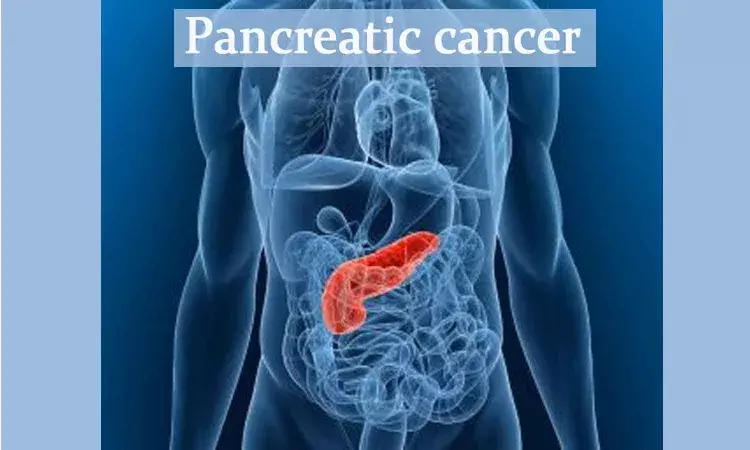- Home
- Medical news & Guidelines
- Anesthesiology
- Cardiology and CTVS
- Critical Care
- Dentistry
- Dermatology
- Diabetes and Endocrinology
- ENT
- Gastroenterology
- Medicine
- Nephrology
- Neurology
- Obstretics-Gynaecology
- Oncology
- Ophthalmology
- Orthopaedics
- Pediatrics-Neonatology
- Psychiatry
- Pulmonology
- Radiology
- Surgery
- Urology
- Laboratory Medicine
- Diet
- Nursing
- Paramedical
- Physiotherapy
- Health news
- Fact Check
- Bone Health Fact Check
- Brain Health Fact Check
- Cancer Related Fact Check
- Child Care Fact Check
- Dental and oral health fact check
- Diabetes and metabolic health fact check
- Diet and Nutrition Fact Check
- Eye and ENT Care Fact Check
- Fitness fact check
- Gut health fact check
- Heart health fact check
- Kidney health fact check
- Medical education fact check
- Men's health fact check
- Respiratory fact check
- Skin and hair care fact check
- Vaccine and Immunization fact check
- Women's health fact check
- AYUSH
- State News
- Andaman and Nicobar Islands
- Andhra Pradesh
- Arunachal Pradesh
- Assam
- Bihar
- Chandigarh
- Chattisgarh
- Dadra and Nagar Haveli
- Daman and Diu
- Delhi
- Goa
- Gujarat
- Haryana
- Himachal Pradesh
- Jammu & Kashmir
- Jharkhand
- Karnataka
- Kerala
- Ladakh
- Lakshadweep
- Madhya Pradesh
- Maharashtra
- Manipur
- Meghalaya
- Mizoram
- Nagaland
- Odisha
- Puducherry
- Punjab
- Rajasthan
- Sikkim
- Tamil Nadu
- Telangana
- Tripura
- Uttar Pradesh
- Uttrakhand
- West Bengal
- Medical Education
- Industry
PET/MRI, CT can predict treatment response in pancreatic cancer: Study

Rochester, MN: Post neoadjuvant therapy (NAT) changes in metabolic metrics tracked on PET/MRI and morphologic metrics from CT were associated with pathologic response and overall survival (OS) for pancreatic ductal adenocarcinoma (PDA) patients, suggests a recent study.
According to the study, published in the American Journal of Roetgenology, imaging metrics associated with OS and pathologic response in PDA could help in guiding clinical management and outcomes for PDA patients receiving emergent therapeutic interventions.
There is a need for imaging biomarkers of response to NAT in PDA in order to optimize treatment decisions and long-term outcomes. Keeping this need in mind, Ananya Panda, the Mayo Clinic, Rochester, MN, and colleagues investigated metrics from PET/MRI and CT for assessment of pathologic response of PDA to NAT and prediction of overall survival.
For the purpose, the researchers included 44 patients with 18F-FDG avid borderline resectable or locally advanced PDA on pre-treatment PET/MRI who also underwent post-NAT PET/MRI prior to surgery between 8/2016 and 9/2019. The researchers then compared CA 19-9, metabolic metrics from PET/MRI, and morphologic metrics from CT (n=34) between pathologic responders [College of American Pathologists scores 0 and 1] and nonresponders (scores 2 and 3).
AUCs were obtained for metrics significantly associated with pathologic response.
Of 44 patients (22 men, 22 women; mean age 62±11.6 years), 19 (43%) were responders, and 25 (57%) were nonresponders.
Key findings of the study include:
- Pre-treatment, responders and non-responders did not differ in CA 19-9, metabolic metrics, or CT metrics.
- Post-treatment, responders and non-responders differed for complete metabolic response (CMR) [responders 90% (17/19), nonresponders 40% (10/25)], change in SUVmax (ΔSUVmax) (mean±SD, responders -70%±13%, nonresponders -37%±42%), change in glucose-corrected SUVmax (ΔSUV gluc) (mean±SD, responders -74%±12%, nonresponders -30%±58%), RECIST response on CT [responders 93% (13/14), nonresponders 50% (10/20)], and change in tumor volume on CT (ΔTvol) (mean ±SD, responders -85%± 21%, nonresponders +57%±400%).
- AUCs of CMR, ΔSUVmax, ΔSUVgluc, RECIST and ΔTvol for pathologic response were 0.75, 0.83, 0.87, 0.71 and 0.86. respectively.
- AUCs of bivariable PET/MRI and CT models were 0.83 (CMR and ΔSUVmax), 0.87 (CMR and ΔSUVgluc) and 0.87 (RECIST and ΔTvol). OS was associated with CMR, ΔSUVmax, ΔSUVgluc, and RECIST."Unlike CA 19-9, post-NAT changes in metabolic metrics from PET/MRI and morphologic metrics from CT were associated with pathologic response and OS in patients with PDA, warranting prospective validation," concluded the authors.
The study, "Borderline Resectable and Locally Advanced Pancreas Cancer: FDG PET/MRI and CT Tumor Metrics for Assessment of Neoadjuvant Therapy Pathologic Response and Prediction of Survival," is published in the American Journal of Roetgenology.
DOI: https://www.ajronline.org/doi/abs/10.2214/AJR.20.24567
Dr Kamal Kant Kohli-MBBS, DTCD- a chest specialist with more than 30 years of practice and a flair for writing clinical articles, Dr Kamal Kant Kohli joined Medical Dialogues as a Chief Editor of Medical News. Besides writing articles, as an editor, he proofreads and verifies all the medical content published on Medical Dialogues including those coming from journals, studies,medical conferences,guidelines etc. Email: drkohli@medicaldialogues.in. Contact no. 011-43720751


